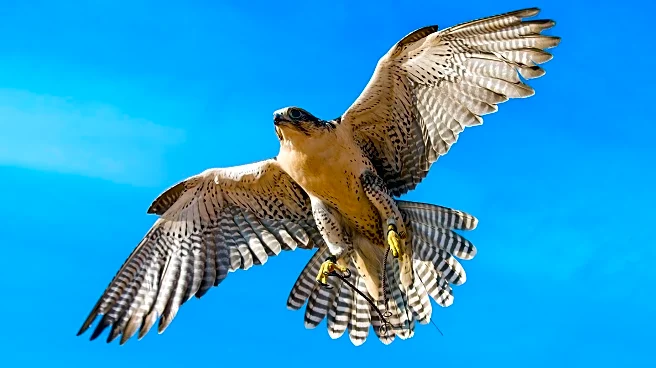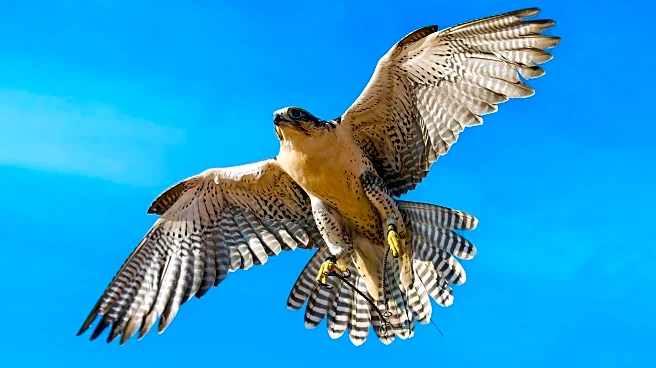What is the story about?
What's Happening?
The Lake Erie Nature & Science Center is drawing attention to the fall migration phenomenon occurring in Northeast Ohio. This period marks a significant natural event where various species, including monarch butterflies, ruby-throated hummingbirds, and tree bats, embark on their migratory journeys. Monarch butterflies travel up to 3,000 miles to Mexico, while hummingbirds make a challenging 500-mile flight across the Gulf of Mexico. Tree bats follow insects southward, seeking warmer climates. The region's diverse ecosystems serve as crucial waypoints for these travelers, offering opportunities for observation at local nature preserves.
Why It's Important?
Fall migration is a critical ecological event that underscores the importance of preserving natural habitats. The migratory paths of these species highlight the interconnectedness of ecosystems across continents. The phenomenon also presents challenges, such as urban light pollution, which can disorient nocturnal migrants, leading to building collisions. Efforts like Lights Out Cleveland aim to mitigate these risks by rescuing injured birds and collecting data. The migration period offers educational opportunities for the public to engage with wildlife conservation efforts and appreciate the natural world.
What's Next?
The Lake Erie Nature & Science Center plans to host a wildlife rehabilitation and release event on October 18 and 19. This event will provide insights into the rehabilitation process for injured migratory birds and foster a deeper understanding of the importance of conservation efforts. Volunteers and specialists will continue to monitor and assist migratory species, ensuring their safe passage through urban areas. Public participation in these events can enhance community awareness and support for ongoing conservation initiatives.
Beyond the Headlines
The fall migration serves as a reminder of the delicate balance between urban development and natural ecosystems. It raises ethical considerations regarding human impact on wildlife and the responsibility to protect migratory pathways. Long-term shifts in climate and habitat availability could further affect migration patterns, necessitating adaptive conservation strategies. The event also highlights cultural dimensions, as communities come together to celebrate and protect these natural wonders.
AI Generated Content
Do you find this article useful?















